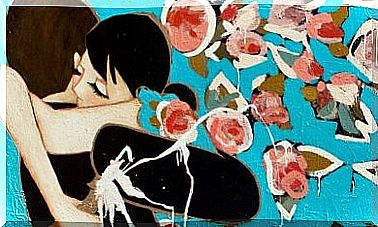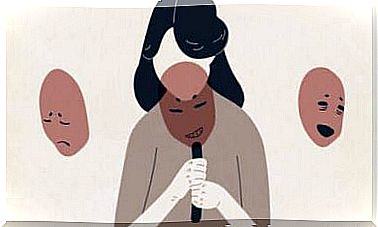Cingulate Gyrus: Structure And Main Functions
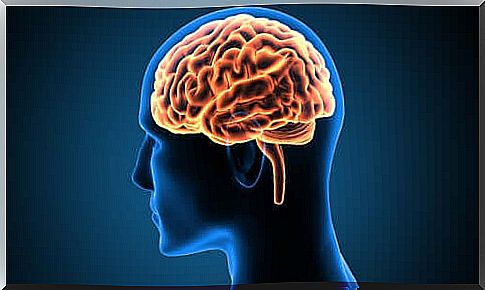
The cingulate gyrus is a part of the human brain that is found in the two cerebral hemispheres. This structure, together with the parahippocampal gyrus, constitutes the limbic cortex of the brain’s limbic system.
When we are restless or anxious, it is the cingulate gyrus that acts. It helps us to express our emotional state through gestures, posture and movement.
As you can imagine, the cingulate gyrus has assumed great importance in neurocognitive and cognitive studies. In addition, this part of the brain’s anatomy has been linked to various brain functions, but also to some disorders.
Alzheimer’s disease and depression are great examples of this. However, it also has to do with other disorders, such as schizophrenia, bipolar disorder, some anxiety disorders and others related to addictions.
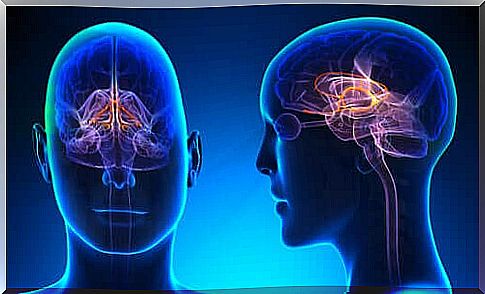
Structure and functions of the cingulate gyrus
anterior cingulate cortex
In general terms, this part of the cerebral cortex plays a role mainly in the autonomic and endocrine responses of emotion and memory storage.
Furthermore, it is believed to participate in the regulation of endocrine function and the expression of autonomous states. It does this through its projections with the nucleus of the solitary tract and the dorsal motor nucleus of the vagus nerve.
However, it is not limited to just making projections for these areas. The anterior cingulate cortex also has extensive connections with:
- The amygdala: This region of the brain is heavily involved in emotional responses.
- Periaqueductal gray matter: is located around the cerebral aqueduct within the tegmentum of the midbrain. It is a primary site for the modulation of certain pain-related circuits.
- Mid-dorsal and anterior thalamic nuclei: it is believed that these nuclei may be involved in some functions, such as learning, memory and attention.
middle cingulate cortex
This part of the cingulate gyrus gets involved when we make predictions about behavioral outcomes. It also helps to carry out this behavior through projections made to the dorsolateral prefrontal cortex, complementary motor areas, parietal cortex, and spinal cord.
Therefore, it is believed that the middle cingulate cortex is related to the processing of information about decision making. That is, decision-making based on reward and cognitive activity associated with intentional motor control.
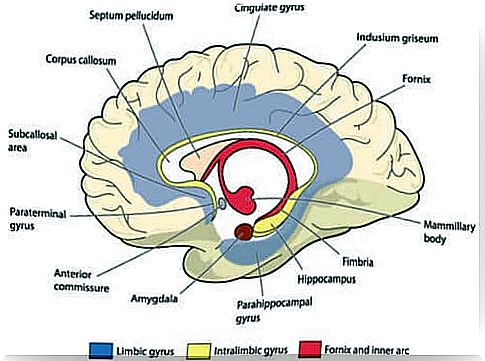
Posterior cingulate cortex
The posterior cingulate gyrus is related to a topokinetic memory circuit. Specifically, its main function is in visuospatial orientation.
The most ventral part appears to be integrated into the “standard mode network” of the brain. That is, a system in the brain that stays active when we don’t pay attention to external stimuli.
Furthermore, it is believed that this part is also related to internally driven cognition processes. Some of them are memory retrieval, planning or processing of spatial information.
There is also the hypothesis that this part is involved in self-control and in the evaluation of events related to self-esteem.
The most dorsal part of the posterior cingulate cortex is closely linked to the premotor, dorsal visual, and orbitofrontal regions of the brain. Furthermore, this part participates in the orientation of the body in a visual space.
retrosplenial cortex
This part of the cingulate gyrus is involved in processes such as autobiographical memory and imagination. Thus, many neurological disorders that impair memory are associated with problems in this region of the cingulate gyrus.
So, the cingulate gyrus is primarily responsible for mediating our emotional responses. In addition, it is also responsible for assigning value to emotion in the face of external and internal stimuli.
Specifically, the cingulate gyrus allows us to vocalize internal states (ie, it gives us the ability to express our emotions aloud).
Finally, if the cingulate gyrus is damaged, the autonomic system may lose its ability to respond to conditioned stimuli. This can lead to aggressive behavior, shyness or decreased feelings of affection.


